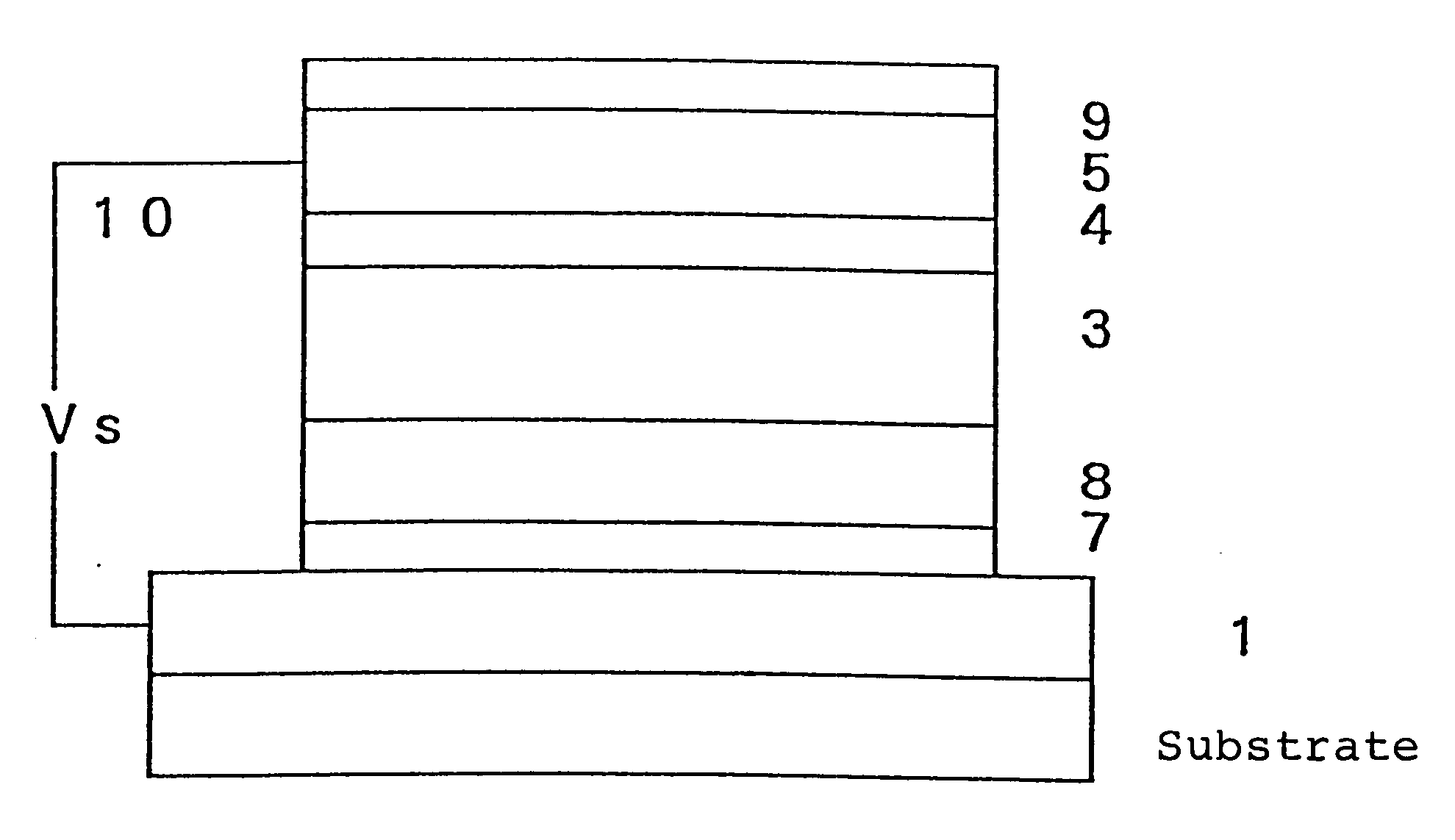Organic electroluminescent element
- Summary
- Abstract
- Description
- Claims
- Application Information
AI Technical Summary
Benefits of technology
Problems solved by technology
Method used
Image
Examples
example 1
N,N'-diphenyl-N,N'-bis(3-methylphenyl)-1,1'-biphenyl-4,4'-diamine was vapor-deposited as an organic hole-injection transporting layer on a glass substrate coated with indium tin oxide. The obtained layer had a thickness of 60 nm
A thin layer having a thickness of 60 nm was formed by means of vacuum deposition with aluminum trisoxine serving as an organic luminous layer.
Lithium fluoride and aluminum trisoxine were co-deposited at a ratio of 1:10 (volume ratio) by means of an electrical resistance heating method to form an electron-injection layer having a layer thickness of 5 nm.
A thin layer having a thickness of 200 nm was formed by means of vapor deposition with aluminum to give a cathode.
In this way, an organic electroluminescent element was prepared.
example 2
N,N'-diphenyl-N,N'-bis(3-methylphenyl)-1,1'-diphenyl-4,4'-diamine was vapor-deposited as an organic hole-injection transporting layer on a glass substrate coated with indium tin oxide. The obtained layer had a thickness of 60 nm.
A thin layer having a thickness of 60 nm was formed by means of vapor deposition with aluminum trisoxine serving as an organic luminous layer.
Lithium fluoride and aluminum trisoxine were co-deposited at a ratio of 1:10 (volume ratio) by means of an electrical resistance heating method to form an electron-injection layer having a layer thickness of 2 nm.
A thin layer having a thickness of 200 nm was formed by means of vapor deposition with aluminum to give a cathode.
In this way, an organic electroluminescent element was prepared.
example 3
N,N'-diphenyl-N,N'-bis(3-methylphenyl)-1,1'-diphenyl-4,4'-diamine was vapor-deposited as an organic hole-injection transporting layer on a glass substrate coated with indium tin oxide. The obtained layer had a thickness of 60 nm
A thin layer having a thickness of 60 nm was formed by means of vapor deposition with aluminum trisoxine serving as an organic luminous layer.
Lithium fluoride and aluminum trisoxine were co-deposited at a ratio of 1:5 (volume ratio) by means of an electrical resistance heating method to form an electron-injection layer having a layer thickness of 1 nm.
A thin layer having a thickness of 200 nm was formed by means of vapor deposition with aluminum to give a cathode.
In this way, an organic electroluminescent element was prepared.
PUM
| Property | Measurement | Unit |
|---|---|---|
| Thickness | aaaaa | aaaaa |
| Work function | aaaaa | aaaaa |
| Fraction | aaaaa | aaaaa |
Abstract
Description
Claims
Application Information
 Login to View More
Login to View More - R&D
- Intellectual Property
- Life Sciences
- Materials
- Tech Scout
- Unparalleled Data Quality
- Higher Quality Content
- 60% Fewer Hallucinations
Browse by: Latest US Patents, China's latest patents, Technical Efficacy Thesaurus, Application Domain, Technology Topic, Popular Technical Reports.
© 2025 PatSnap. All rights reserved.Legal|Privacy policy|Modern Slavery Act Transparency Statement|Sitemap|About US| Contact US: help@patsnap.com



